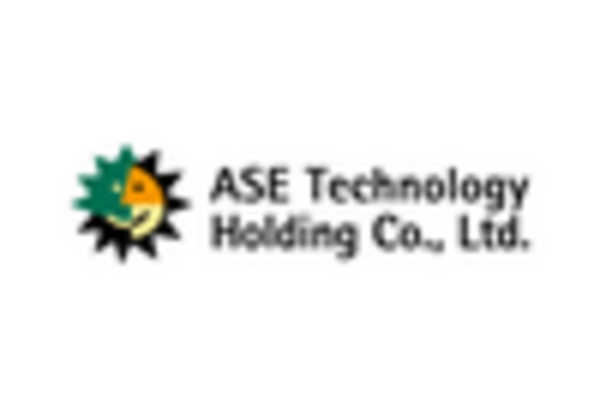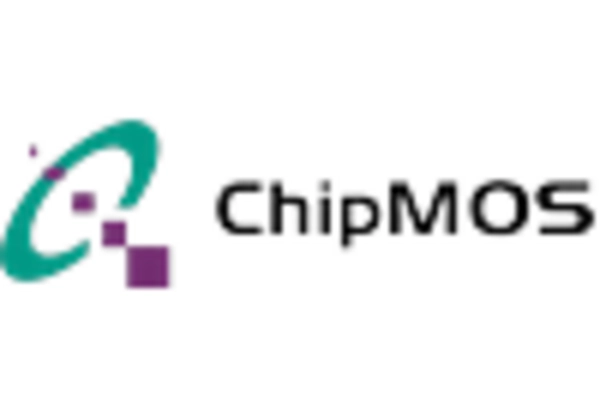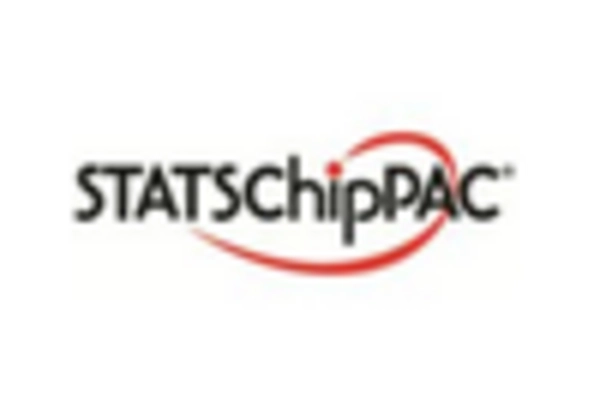Rising Focus on IoT Applications
The proliferation of Internet of Things (IoT) devices is reshaping the semiconductor assembly-testing-services market landscape. As industries increasingly adopt IoT solutions for enhanced connectivity and efficiency, the demand for reliable semiconductor components escalates. In 2025, the IoT market in the US is anticipated to exceed $200 billion, driving the need for specialized assembly and testing services. This trend compels companies in the semiconductor assembly-testing-services market to develop innovative solutions that cater to the unique requirements of IoT applications, ensuring that devices function seamlessly and securely. The emphasis on quality and performance in this sector is likely to spur advancements in testing methodologies and assembly processes.
Expansion of Automotive Electronics
The automotive sector's transformation towards electrification and automation significantly impacts the semiconductor assembly-testing-services market. With the increasing integration of advanced electronic systems in vehicles, the demand for high-quality semiconductor components rises. In 2025, the automotive electronics market is expected to surpass $300 billion in the US, creating a substantial opportunity for semiconductor assembly and testing services. This shift necessitates rigorous testing protocols to ensure safety and performance standards are met. As a result, companies in the semiconductor assembly-testing-services market are likely to adapt their strategies to cater to the evolving needs of the automotive industry, focusing on reliability and efficiency.
Investment in Research and Development
Investment in research and development (R&D) within the semiconductor assembly-testing-services market is crucial for fostering innovation and maintaining competitiveness. As technology evolves, companies are compelled to enhance their service offerings through R&D initiatives. In 2025, the semiconductor industry in the US is projected to allocate over $40 billion towards R&D, which will likely benefit the assembly and testing services sector. This investment enables firms to explore new materials, processes, and technologies, ultimately improving the efficiency and reliability of semiconductor components. Consequently, a strong focus on R&D may lead to breakthroughs that redefine standards in the semiconductor assembly-testing-services market, positioning companies for long-term success.
Increasing Demand for Consumer Electronics
The semiconductor assembly-testing-services market experiences a robust demand driven by the surging consumption of consumer electronics. As households increasingly adopt smart devices, the need for efficient semiconductor solutions escalates. In 2025, the consumer electronics sector is projected to reach a valuation of approximately $1 trillion in the US, which directly influences the semiconductor assembly-testing-services market. This growth necessitates advanced assembly and testing services to ensure product reliability and performance. Consequently, companies in the semiconductor assembly-testing-services market are likely to invest in innovative technologies to meet the rising expectations of consumers, thereby enhancing their service offerings and operational efficiencies.
Growth in Telecommunications Infrastructure
The ongoing expansion of telecommunications infrastructure, particularly with the rollout of 5G technology, is a significant driver for the semiconductor assembly-testing-services market. As telecommunications companies invest heavily in upgrading their networks, the demand for advanced semiconductor components increases. In 2025, the US telecommunications market is projected to reach approximately $500 billion, which will likely necessitate enhanced assembly and testing services to support the deployment of 5G networks. This growth presents opportunities for semiconductor assembly-testing-services market players to innovate and provide tailored solutions that meet the specific requirements of telecommunications providers, thereby enhancing their competitive edge.














Leave a Comment